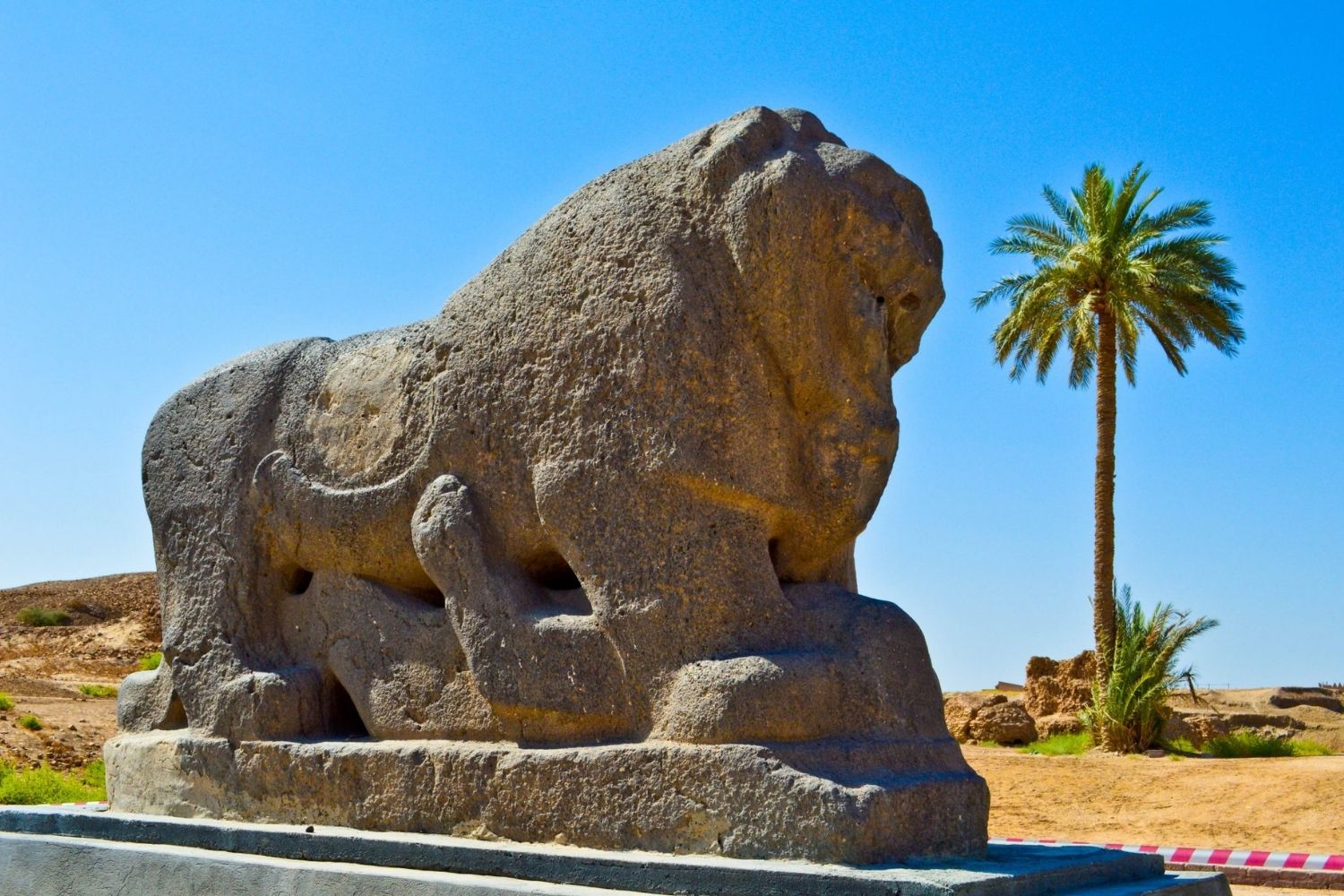
The Lion of Babylon stands as a powerful symbol of ancient Mesopotamian culture, representing strength, courage, and royalty. This majestic statue, carved from black basalt, dates back to the time of King Nebuchadnezzar II, around 600 BCE. Located in the ancient city of Babylon, near modern-day Hillah in Iraq, it has fascinated historians and tourists alike. But what makes this stone lion so special? Is it the intricate craftsmanship, the historical significance, or the myths surrounding it? In this blog post, we will explore 30 intriguing facts about the Lion of Babylon, shedding light on its origins, symbolism, and lasting impact on history. Get ready to dive into the world of ancient wonders!
The Lion of Babylon: An Ancient Marvel
The Lion of Babylon is a significant artifact from ancient Mesopotamia. This majestic statue has fascinated historians, archaeologists, and tourists alike. Here are some intriguing facts about this ancient wonder.
-
The Lion of Babylon is a stone sculpture located in the ancient city of Babylon, in modern-day Iraq.
-
This statue dates back to the Neo-Babylonian period, around 600 BCE.
-
It stands approximately 2.6 meters tall and 2.6 meters long, making it an imposing figure.
-
The lion is carved from black basalt, a volcanic rock known for its durability.
-
The statue depicts a lion trampling a man, symbolizing the power and dominance of the Babylonian empire.
Historical Significance
The Lion of Babylon holds immense historical value, shedding light on the culture and beliefs of ancient Mesopotamia.
-
The lion was a symbol of Ishtar, the Babylonian goddess of love, war, and fertility.
-
It is believed that the statue was commissioned by King Nebuchadnezzar II, one of Babylon's most famous rulers.
-
The Lion of Babylon was discovered in 1876 by German archaeologist Robert Koldewey.
-
The statue was found near the Ishtar Gate, another significant Babylonian monument.
-
The Lion of Babylon is considered one of the most important artifacts from ancient Mesopotamia.
Artistic and Cultural Insights
The craftsmanship and symbolism of the Lion of Babylon provide valuable insights into the artistic and cultural practices of the time.
-
The lion's detailed features, such as its mane and muscles, showcase the advanced sculpting techniques of the Babylonians.
-
The statue's design reflects the importance of lions in Babylonian art and mythology.
-
The Lion of Babylon is one of the few surviving examples of large-scale Babylonian sculpture.
-
The statue's depiction of a lion trampling a man may represent the king's role as a protector of his people.
-
The Lion of Babylon has inspired numerous replicas and artistic interpretations over the centuries.
Preservation and Modern-Day Relevance
Efforts to preserve the Lion of Babylon highlight its enduring significance in both historical and contemporary contexts.
-
The statue has undergone several restoration efforts to protect it from weathering and damage.
-
The Lion of Babylon is a popular tourist attraction, drawing visitors from around the world.
-
It is featured on the 25,000 Iraqi dinar banknote, symbolizing its national importance.
-
The Lion of Babylon has been the subject of various academic studies and research projects.
-
The statue is a UNESCO World Heritage site, recognized for its cultural and historical value.
Symbolism and Interpretation
The Lion of Babylon's symbolism continues to be a topic of interest and debate among scholars and historians.
-
Some believe the lion represents the strength and power of the Babylonian empire.
-
Others interpret the statue as a symbol of divine protection and favor.
-
The man beneath the lion may symbolize the enemies of Babylon, crushed by the empire's might.
-
The statue's location near the Ishtar Gate suggests a connection to religious and ceremonial practices.
-
The Lion of Babylon is often seen as a representation of the dual nature of Ishtar, embodying both love and war.
The Lion of Babylon in Popular Culture
The Lion of Babylon has left a lasting impact on popular culture, appearing in various forms of media and art.
-
The statue has been featured in numerous documentaries and television programs about ancient Mesopotamia.
-
It has inspired works of literature, including novels and poems set in ancient Babylon.
-
The Lion of Babylon has appeared in video games and movies, often as a symbol of ancient power and mystery.
-
Artists and sculptors continue to create modern interpretations of the Lion of Babylon, showcasing its timeless appeal.
-
The statue remains a powerful symbol of Iraq's rich cultural heritage and historical legacy.
Final Roar
The Lion of Babylon stands as a powerful symbol of Iraq's rich history and cultural heritage. This ancient statue, crafted from basalt, has witnessed the rise and fall of empires, serving as a testament to the resilience and strength of the Babylonian civilization. Its intricate design and imposing presence continue to captivate historians, archaeologists, and tourists alike.
Understanding the significance of the Lion of Babylon offers a glimpse into the past, shedding light on the artistic and architectural prowess of ancient Mesopotamia. Whether you're a history buff or just curious about ancient wonders, the Lion of Babylon is a fascinating piece of human history that deserves recognition.
Next time you think about ancient civilizations, remember the Lion of Babylon—a true emblem of power, protection, and enduring legacy.
Was this page helpful?
Our commitment to delivering trustworthy and engaging content is at the heart of what we do. Each fact on our site is contributed by real users like you, bringing a wealth of diverse insights and information. To ensure the highest standards of accuracy and reliability, our dedicated editors meticulously review each submission. This process guarantees that the facts we share are not only fascinating but also credible. Trust in our commitment to quality and authenticity as you explore and learn with us.
